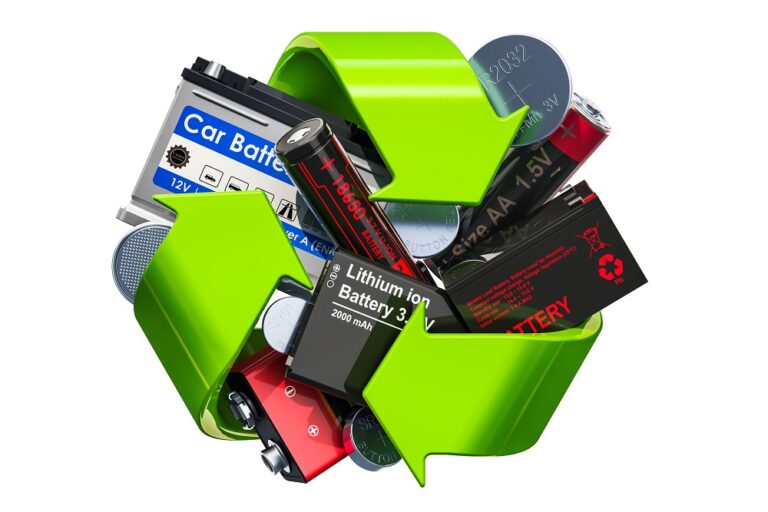Batteries are somewhat unique among most everyday items that are now widely recycled. The process for recycling batteries and the materials that can be salvaged from a used battery are both fairly unique. How a battery is recycled is also dependent on what type of battery it is. And because batteries contain certain valuable materials, battery recycling is a necessity if ready access to this technology is to remain a fact of life into the future.
All batteries will eventually need to be recycled. Even rechargeable batteries can only sustain so many charge cycles before disposal. Granted, with newer technologies such as USB rechargeable batteries and batteries that can sustain over a thousand charge cycles, the rate of battery disposal has significantly decreased. Nevertheless, the potential harm used batteries can do to the environment as well as the valuable materials inside them makes battery recycling a necessity Specifically, it is the number heavy metals and toxic chemicals within batteries that make disposal as municipal solid waste a real threat of water or soil contamination.
Valuable Materials
Lead acid batteries are typically recycled to retrieve the lead that is inside. Lead is a valuable substance with a range of uses and so it is always recycled. Button cells containing zinc and lithium are also widely recycled for the high value of these materials. Recycled nickel-cadmium batteries also provide a good source of these valuable materials.
How Are They Recycled?
Different batteries need to be recycled in a specific way, although there are some consistencies across the different processes used. Before recycling, proper battery disposal is necessary and different batteries are nearly always collected separately in different receptacles ahead of recycling. Many will be familiar with the-often battery shaped recycling receptacles that have become a common feature in a range of public places, very often in supermarkets or at recycling points.
Here follows the processes by which the two most commonly recycled batteries are stripped of their valuable and toxic substances.
Lead-Acid Batteries
Lead-acid batteries, like the one found inside your car, are actually the most commonly recycled batteries. In fact, over 90% lead-acid batteries are recycled. Lead-acid batteries are not all from cars (they can also come from smaller vehicles like golf caddies and devices like UPS units) but they are typically large and bulky.
The process for recycling lead-acid batteries is to first remove any plastic casing and then to grind the battery up with powerful machinery. At this point, the acid inside is neutralized. The most valuable material to be salvaged is the lead. Because elemental lead is a toxic substance, it is also imperative that it does not make it into any waste stream.
This process, as you might expect, requires heavy machinery and a lot of safety precautions as contact with lead can be a serious hazard for workers. Nevertheless, it is estimated that over 99% of the lead from recycled car batteries is reclaimed in the U.S. alone.
Lithium-ion Batteries
Lithium-ion batteries can have a very long life. The USB rechargeable batteries from Pale Blue Earth, a high-tech battery company out of Park City, Utah, are specifically designed to reduce battery waste by being long-lived.
Recycling these batteries is a much more complicated process and involves a separate extraction technique for each part and substance within the battery. Li-ion batteries also need to be discharged before processing.
Specifically, it is the recovery of the electrolyte and the lithium from these batteries that is so important. Again, this simply cannot be released into the environment. Battery recycling is certainly a complex process, but one that cannot be ignored.


Comments are closed.